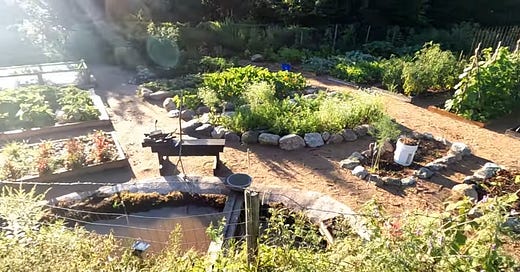Back to Gardening Chapter 4, Design - Part A: Design Matters
So far we has discussed how to choose the right location, develop the soil, and what tools are needed to maintain a garden, but now it is time to think about garden design - because design matters!
Chapter 4, Design - Part A: Design Matters
Garden design is often associated with ornamental gardens because their main purpose is usually to enhance the visual beauty and appeal of a space, and the right design can really augment that aspect of their character. Despite this association with ornamental gardening, design is far more important for vegetable gardens than one might think - especially as they increase in size and scale. Personally, I have re-designed my garden a number of times - and this is usually a result of making it larger, and then realizing that everything is in the wrong place. Each time I thought I had the perfect layout - only to realize over the course of a gardening season, that there were aspects of it that didn’t make any sense, and that a better design was needed. Garden design matters for a number of reasons, but most importantly, I think functionality, efficiency, working with nature, and (yes), aesthetics are at the top of my list.
Functionality
A garden space needs to be laid out such that it is easy for the gardener to move around and do everything that is required to maintain a garden. This means there must be room to maneuver a wheelbarrow, to kneel, and to wield large tool, because weeding, pruning, trellising, digging, raking, and harvesting are all essential parts of gardening. Functionality also speaks to how well suited the garden space is to
Keep reading with a 7-day free trial
Subscribe to The Maritime Gardening Newsletter to keep reading this post and get 7 days of free access to the full post archives.



